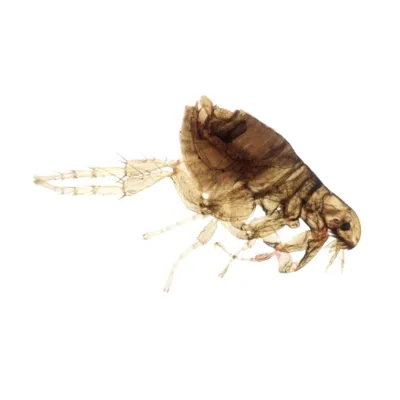
Insects
1.5 to 3.3 mm
Small, wingless, reddish-brown, with flattened bodies and powerful hind legs for jumping.
6
Yes, though very small
None
Commonly found on pets, in pet bedding, carpets, and upholstery. Outdoors, they may reside in shaded, moist areas where pets and wildlife spend time.
Fleas are tiny, parasitic insects that survive by feeding on the blood of animals and, occasionally, humans.
Known for their incredible jumping ability, fleas can quickly spread through homes and yards, especially in households with pets.
Their bites cause itching and irritation, and they can transmit diseases and tapeworms, posing health risks to both pets and people.
Fleas are small, reddish-brown, and wingless, with flattened bodies that allow them to navigate through animal fur.
They are equipped with strong hind legs, enabling them to jump up to 8 inches vertically and 13 inches horizontally.
Flea larvae are small, pale, and worm-like in appearance, often found in bedding or carpet.
Fleas thrive in warm, humid environments. They are commonly found on household pets and in pet bedding, carpets, and upholstered furniture.
Outdoors, they live in shaded, moist areas, such as under decks, near pet resting spots, and in soil.
Fleas are highly resilient and can go long periods without feeding, waiting for a host to pass by.
Flea bites can cause itching, allergic reactions, and dermatitis in both pets and humans.
Fleas are also vectors for diseases like typhus and cat scratch fever and can transmit tapeworms to pets if ingested.
Heavy infestations can make living conditions uncomfortable and pose health risks, especially to young children and pets.
Our support team is here and ready to assist with any questions or to schedule a pest control service whenever it’s convenient for you.
Copyright © 2025 Florida Pest Control Near Me
Designed by Digital Market Guru